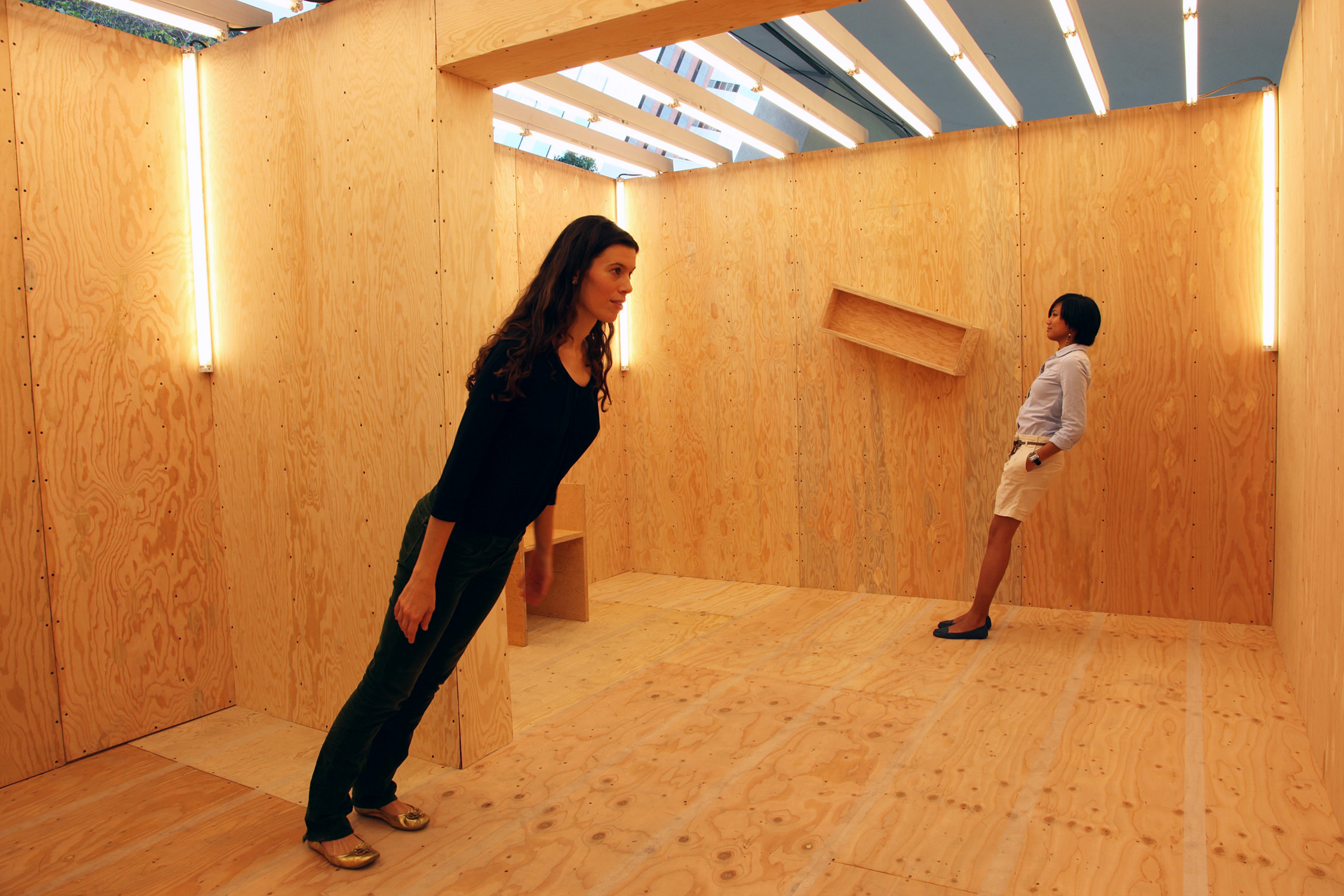Halloween is over, but a glimpse of the bizarre will remain on hand a while longer at the Hammer Museum. Mixed-media artist Julian Hoeber’s interactive and disorienting exhibit “Demon Hill” will be displayed on the museum’s third-floor terrace through Jan. 23.
The mixed-media installation features a standard door frame. However, upon entering the plywood structure, the sense of gravity seemingly becomes altered.
Once inside, viewers face two objects in the simple room design ““ a swinging pendulum and a mirror reflecting the seemingly altered space. A second room contrasts the first and includes a standard chair and bookcase.
Sensations of vertigo ensue, though tilted stances are more apparent with more visitors within the space.
These dualities are further explored in Hoeber’s title, “Demon Hill,” which was based on a play on words.
According to Hoeber, he wanted a title that evoked the supernatural quality that came with roadside mystery spot attractions and also a pun on a gallery-owning family’s name ““ De Menil.
“The De Menil family (had) a gallery that is associated with a lot of earth work and minimalist art, which is part of the medium I’m taking on as I build this thing. It was a way to make a name that contained both sides of the interest and make a little name of it,” Hoeber said.
After Hammer curator Ali Subotnick heard of Hoeber’s process and saw his building prototype, she sought to acquire the piece for exhibition at the Hammer. She said she was interested in the way the piece defied its appearance.
“You look at it and think, “˜Okay, I can walk uphill, no problem.’ But once you go in, your whole body is completely disoriented and you have no point of reference,” Subotnick said.
Hoeber’s disorienting work was largely inspired by famous “mystery” tourist spots around the United States. He discovered one such site, The Cosmos, in the Black Hills of South Dakota while moving cross-country from Philadelphia to Los Angeles.
“(It) is a roadside attraction … where gravity didn’t obey the normal rules. I got there and it was this strange shack of a house. You go in and you stand at a weird angle and you can roll a tennis ball uphill. It completely baffled me,” Hoeber said.
Once Hoeber understood the work behind these pieces, he began his own artwork based on his findings.
According to Subotnick, the physical experience from the artwork will produce an intentional effect of disorientation and dizziness.
“With any exhibit we hope that (it) enlightens or entertains or provokes and gives you an experience. (There’s) no doubt that this gives you an experience,” Subotnick said.
Second-year physics student Jonathan Lajcaj said he experienced the perplexing effects of the exhibit when he dared to enter “Demon Hill.”
“It (is) interactive, which is not usual of art,” Lajcaj said. “I’ve only heard of exhibits like this like the Santa Cruz mystery spot. … I was wondering how upset my engineering friends would be that this house was titled like this.”
While Hoeber said that he does not have a single specific intent, he does want viewers to experience a physical affect of disorientation.
“I don’t claim to have total control over the experience and I’m always fascinated to know how the experience affects others,” Hoeber said. “It’s always more interesting to see the world open up as the complex place that I couldn’t have predicted.”
